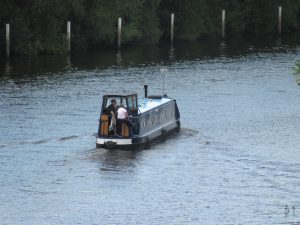 Little change would be evident to the rivers Aire and Calder from the iron age to the advent of the Romans. Perhaps both rivers would have been smaller and more shallow, maybe more like the middle reaches of the Ure or Swale but with extensive fens with only limited transport utilisation excluding crossings by ford and by ferry.
Little change would be evident to the rivers Aire and Calder from the iron age to the advent of the Romans. Perhaps both rivers would have been smaller and more shallow, maybe more like the middle reaches of the Ure or Swale but with extensive fens with only limited transport utilisation excluding crossings by ford and by ferry.
Both rivers would have been well stocked and intensively fished although we know from mediaeval records that fishing in the Calder required permission of the Lord of the Manor.
By the end of the 17th century improvements were now being put into river navigation by elementary dredging, by-pass locks at weirs and also early canal cuts which served to improve transportation and trade for the developing towns. By the 1790’s further canal cuts were constructed leading to more industrial prosperity in the 19th century..
Water volume would increase with drainage from the new industrial towns and cities which also were to decimate the water quality and river life.
Commercial success was based initially on carrying wool and agricultural produce and later, carrying minerals such as coal and more recently petroleum and gravel.
Many waterway systems were adversely affected by rail and subsequently road haulage, however the Aire and Calder Navigation Co. tackled these changes and to prevent further decline the now British Waterways Board invested in further widening and lock automation schemes and continues to provide an alternative bulk transport system which includes the increasing pleasure craft business.